
This month’s club notes are written by staff-member Irene Lozach.
This is not your typical selection from Burgundy.
Burgundy (I know, I’m supposed to refer to it as Bourgogne. Sorry, not sorry, France) is known for two things: Chardonnay and Pinot Noir. The other thing is tiny quantities of very good, very expensive wines. Of course Burgundy is known for much, much more.
This month we are showcasing 4 wines that are not strictly typical of Burgundy. While one is a blend of Chardonnay and Pinot Noir it’s sparkling and from the Côte Chalonnaise. Another is a non-sparkling blend of Gamay and Pinot Noir; an uncommon thing in this region of 100% varietal rules. We also have a delicious Aligoté from the Côte de Beaune, an area where Chardonnay reigns supreme; as well as an Irancy which, while made from Pinot Noir, is from waaaay up north by Chablis in Auxerre.
Each of this month’s wines shows depth, structure, and charm. Together they present an exploration of more of what Bourgogne has to offer.
Click here for a wine map of France (with links to Burgundy).
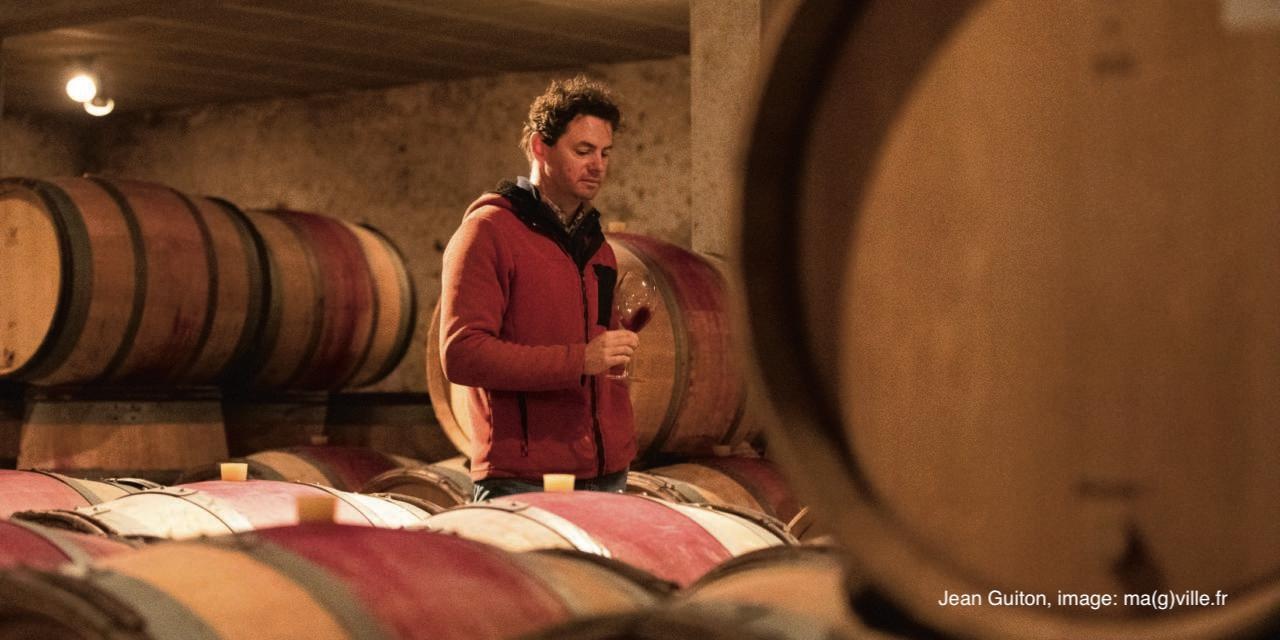
Jean Guiton Aligoté 2021
Like every grape variety, Aligoté has parents and siblings. DNA testing has shown that a Pinot (of the species Vitis vinifera) clonal variation is the father to Aligoté (maybe Pinot Noir, Pinot Blanc, Meunier? Who knows, they all have the same DNA) while Gouais (also V. vinifera) is the mother. Sometime within the 2,000-year span of Pinot the pollen from the stamens of some Pinot flowers transferred to the stigmas of some Gouais flowers and a new family of grape varieties emerged which includes Aligoté.
This form of propagation, when both parents are of the same species, is called a crossing Theoretically, every seedling, even if it is pollinated by a member of the same grape variety (i.e. two Pinot vines), is a crossing as any vine that results from the seed being planted will be a different grape variety distinct from either parent. Indeed, Pinot and Gouais are also the parents of Chardonnay, Gamay Noir, and many other Aligoté siblings.
These three siblings, Aligoté, Chardonnay, and Gamay, along with the father, Pinot Noir (a very important clonal variation of Pinot) are planted in the vineyards of Burgundy and have found success in vineyards around the world. Though Aligoté has been somewhat nudged out by the overwhelming demand for white Burgundian wines made from Chardonnay (Aligoté plantings equal only13% those of Chardonnay), those who discover Bourgogne Aligoté can be richly rewarded by this exciting variety of comparative great value in white Burgundy.
Domaine Jean Guiton Aligoté is included here as one such discovery. Founded in 1975 by Jean Guiton, his son Gillaume, who joined him in 1998, has taken over winemaking since 2002. Today the Guitons have about 25 acres of vineyards producing 5,000 cases (mainly of red wine) per year. Guillaume, a firm believer in the importance of terroir, farms organically using no herbicides or pesticides.
The Guitons planted Aligoté in 2003 on a vineyard site at Bligny-Les-Beaune on the plains below the Côte de Beaune. The soil there is a mix of sand and gravel. Though the fast draining nature of such porous soil can prove difficult in hot and dry years (remember: irrigation is prohibited in Burgundy vineyards), the heat retaining capacity allows these Aligoté grapes to mature reliably and develop a strong mid-palate texture.
The wine is elegant yet firm and full of energy. Hand-harvesting and slow, whole-cluster pressing ensure pristine juice. Native yeast fermentation in stainless steel tank is followed by 12 months aging, also in stainless steel, allowing more textural complexity to emerge from contact with yeast lees. After racking off its lees, the wine is bottled unfiltered, then held for an additional few months aging prior to release.
While 2021 was in many ways a nail biter of a vintage in Burgundy with early frost and plenty of rain, August and September were warm and dry allowing the grapes to ripen––and being on warm, sand/gravel soils this vineyard could be harvested before early autumn rains began to fall that year. Domaine Jean Guiton Bourgogne Aligoté 2021 shows complex aromas and flavors of perfectly ripe, crisp Granny Smith apple, lemon zest and pith, wisps of smoky sandalwood, and a hint of creamy caramel that builds with time in the glass. A lees texture and the naturally high acidity of Aligoté propel the wine's long and energetic finish.
(I tasted this bottle twice, first on Monday when I opened it in the shop, then again on Friday with supper. Over those four days in the fridge it had evolved nicely, developing more of the caramel quality and retaining a whole lot of that apple and lemon primary fruit)

Benoit Cantin Irancy
As far back as the 19th century, scientists have been using records of grape harvest dates to track climatic changes. Recent study of a set of records from the city of Beaune, France dating back to 1354 tell the story in consistent, single site data. Beaune is an excellent site for long-term analysis of grape harvests as rows of grape vines have dotted its slopes for centuries and still do so today.
A team of researchers have mined original sources (such as medieval accounts of wage payments to vineyard laborers, city council records, and newspaper reports) to determine when Beaune’s grapes were harvested each year from 1354 to 2018 and recovered harvest dates ranging from 16 August to 28 October. The scientists found that the grape harvest dates could be divided into two groups. Grapes were, on average, picked on 28 September or later before 1988. But from 1988 onward, grapes were harvested roughly 13 days earlier! Now, Burgundy is at no risk of becoming the Languedoc but that degree of shortening of the growing season effects wine style bringing darker berries, higher tannins and higher levels of alcohol. Burgundy, which covers about 280km running from Lyon in the South to Auxerre in the North, saw Irancy near Auxerre, be granted AOC status in 2000 with the 1998 vintage. This forward looking planning decision is now culminating in Irancy coming into its own as another red wine region of great distinction, this one in the Yonne department just south and west of Chablis.

The AOC of Irancy is a gorgeous south-facing amphitheater that descends from a hard limestone ridge forming its northern boundary, then slopes down to the town of Irancy at its base. This south facing circle of slopes offers a range of S, SE and SW facing aspects ideal for absorbing the sun’s radiation to ripen the grapes. The degree of slope ensures that when frost occurs the cold air is able to flow down the hillsides and through the vineyards rather than to roost within the vines which would cause crop loss and vine damage.
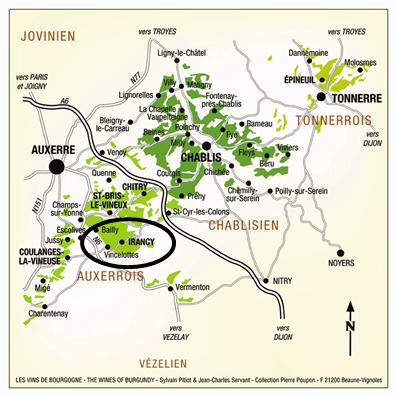
The vineyards of Irancy grow on the same Kimmeridgian (limestone marl, and clay) soils as those of Chablis. As in Chablis the soils of the upper slope have higher limestone content, the mid-slope is perfectly balanced with limestone, loam, and clay (allowing for water retention as well as sufficient drainage) and the bottom of the slope is the most fertile so is used primarily for crops other than wine grapes.
Due to the cool northern climate and an historical need to offer the delicate, hard to ripen Pinot Noir a leg up, blending is permitted here. Up to 15% César, a dark and tannic variety, can be blended with the Pinot Noir to bring backbone and color in particularly cool years.
Domaine Benoit Cantin Irancy 2021
Domaine Benoit Cantin is a fifth generation family estate currently headed up by Benoit Cantin since 1994. The sixth generation is currently preparing, with their studies at Beaune wine school, to take the reins one day. Over the generations the family has amassed 16ha of vineyard land across several lieux-dits in Irancy. Benoit’s wines display a rustic elegance, an earthy, Burgundian soulfulness, and a structure and depth well above their price point. They are wines of character, with a strong sense of place and typicity, as well as great freshness thanks to the limestone soils in which they are grown.
The estate is worked organically with no herbicides, pesticides or chemical fertilizers. The grapes are harvested by hand and sorted in the vineyard. After the grapes are destemmed and crushed the fermentation and maceration take place in underground cement tanks. Then the wine is aged in 228L french oak barrels (15% new) for 12 months.
The result is a medium ruby hued wine with aromas of red plum and black cherry; tomato leaf and forest floor; lead pencil shavings and a whiff of wood smoke. On the palate juicy acidity and fine grained tannins provide structure for cherry, plum and umami flavors. The finish is long, generous and consistent with its aromas and flavors. A perfect match for creamy polenta and mushrooms roasted in plenty of butter with shallots and thyme.

Domaine d’Heilly-Huberdeau (the Domaine Chetif Quart backstory)
Martine Heilly and Pierre Huberdeau met in the mid-1970’s while studying ecology at the University of Rennes in eastern Bretagne. Their studies there allowed them to recognize the impact of human behavior on the environment and on biodiversity. This understanding has informed their approach to farming ever since.
In 1978 they were fortunate to find a farm in Burgundy to purchase. The site had cellars and barns used by generations of the region's growers cooperatively for wine storage and shelter for work horses. 1979 saw their first harvest from 1ha of vines on the farm.
Over the years Martine and Pierre increased their vineyard holdings to include 5ha on S, SE facing hillsides mainly at mid-slope along Mont-Arvil which touches Morogues, Jambly, and Givry. The clay-limestone soils, typical of the region; are planted to Pinot Noir, Chardonnay, and Aligoté, and are worked organically. This family has, all the while, advocated for organic methods encouraging others to practice organic agriculture, their goal being to apply science to natural farming to improve the environment and the local economy. This is a concept that has recently become very popular in viticultural circles. Indeed, having farmed ‘organically’ from the start, French organic certification began to catch up to the family Heilly-Huberdeau by the early 2000s with the establishment of certifying organizations for organics allowing Pierre and Martine to quickly achieve certification.
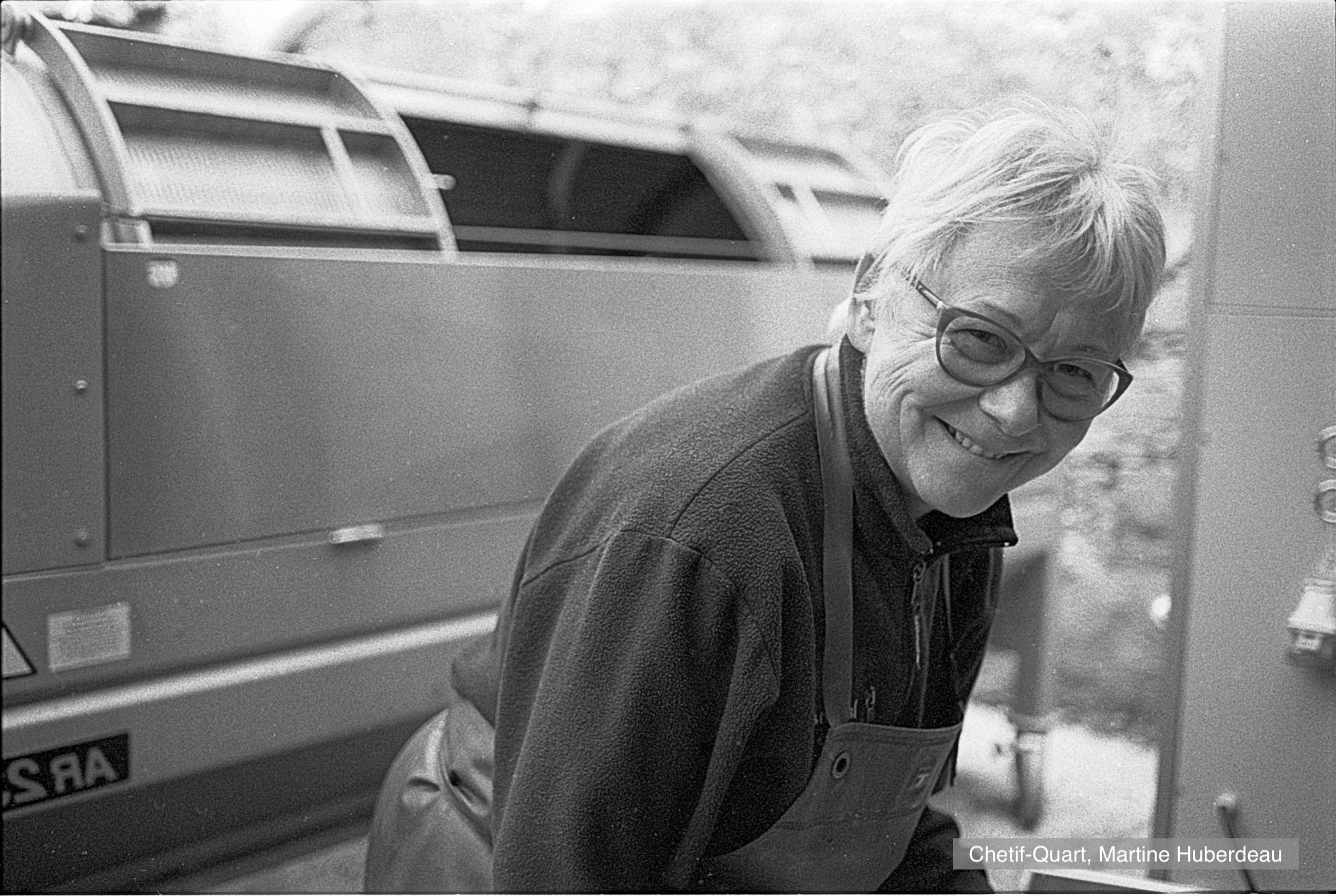
Their son Lucas is now heading up the estate management and winemaking. He lives on the estate with his wife and two young children and carries on, un-changed, the processes followed by his parents in making the best wines they can, vintage after vintage, from their 5ha estate. The only thing that has changed is the name. To honor the regional tradition of recognizing production by the place name it is rooted in, Lucas changed the estate name to reflect its location: Domaine Chetif Quart.
Domaine Chetif Quart, Crémant de Bourgogne NV
In 1985, when the French banned using the term ‘méthode champenoise’ in favor of ‘méthode traditionnelle’ the term Crémant came to be used exclusively for traditional method sparkling wine made outside of Champagne in France. Over the following decades production grew and a total of 8 Crémant designations now exist. Not surprisingly, Martine and Pierre were early adopters of the concept, releasing their first Crémant the following year! After working for some years with a custom Crémant bottling service (overseers bottling to remuage to disgorgement) Pierre and Martine established their own ‘Crémant workshop’ through which they have produced Crémant since.

Their production is traditional, as it has long been done in Champagne. Beginning with just ripe Chardonnay and Pinot Noir grapes (maybe a skosh of Aligoté) with 10-11% potential alcohol and high acidity the base wine is fermented then filtered. The liqueur de tirage is added and the wine is put in the bottle you have received in this pack. This sugar and yeast solution ferments in the bottle, absorbing the CO2 released during fermentation into the wine only to be released when you pour yourself a glass. Before that, however, several steps must be adhered to. Once the prize-de-mousse is complete a period of elevage (aging) in the bottle, laid on its side, for 12 months is observed where the wine gains complexity and texture from the lees. After this, remuage is performed to move the lees into the cap for disgorgement, topping off with the liqueur d’expédition and the insertion of the final cork. It really is quite a process.
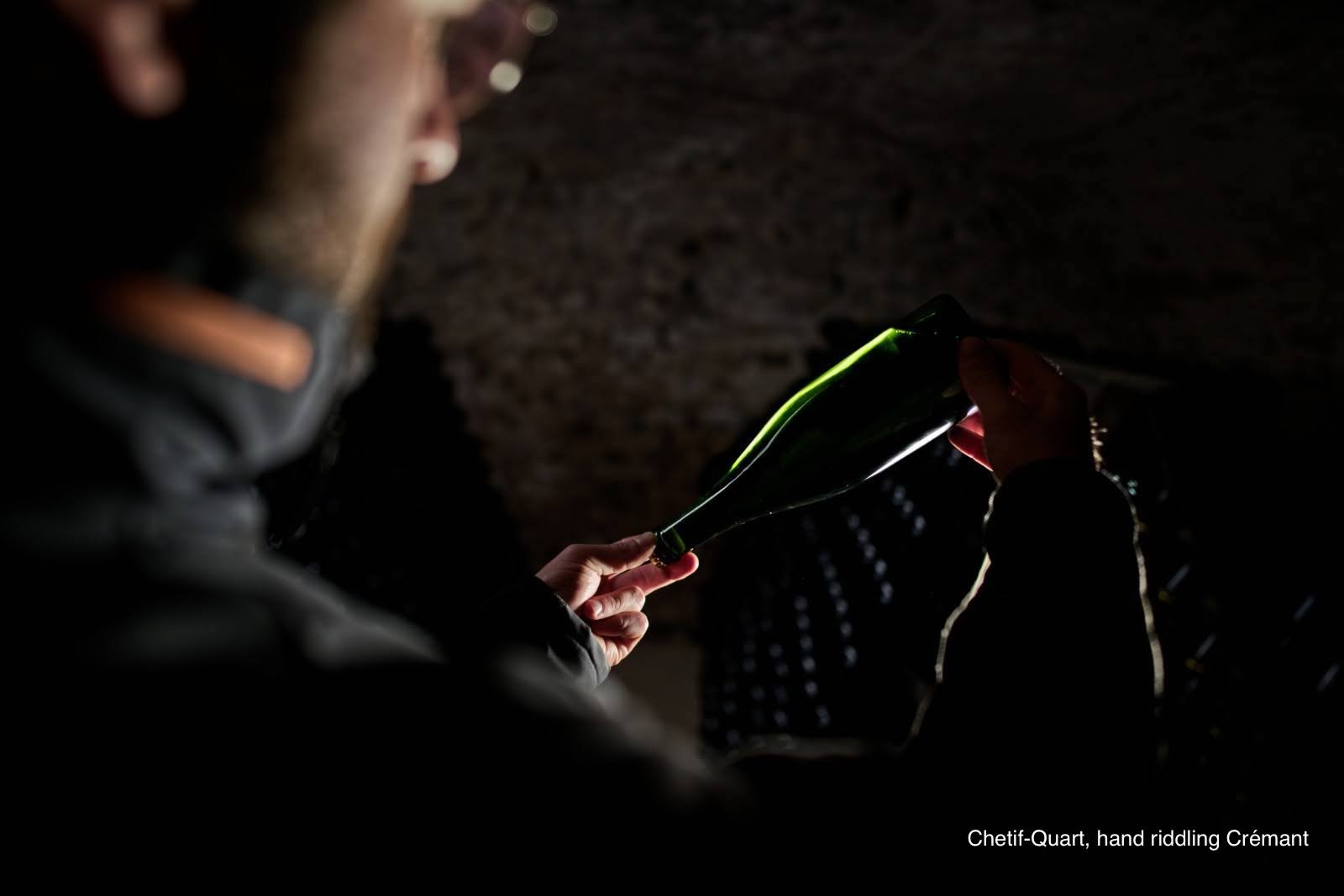
I hope you love the fine and persistent mousse of this wine. Aromas are of white flowers, lemon, dried camomile, and green apple as well as yogurt and biscuit. The palate is lively and creamy and bright with a range of flavors revealing themselves: from fresh green fruits to creme fraiche to a hint of brioche and a touch of nougat. I would certainly enjoy this throughout the meal. First on its own as I prepare some chicken in a light cream sauce with mushrooms, then when I’m eating that. I’d even save a glass to wash down a double creme cheese before (ok, instead of) dessert.

Domaine Chetif Quart Coteaux Bourguignons 2020
Coteaux Bourguignons (meaning Burgundy hillsides) is an AOC encompassing the entire Burgundy region from Auxerre south to Beaujolais. Reds can be made from Pinot Noir and Gamay (in Auxerre César and Tressot as well) and whites from Chardonnay and Aligoté either as varietal or blends.
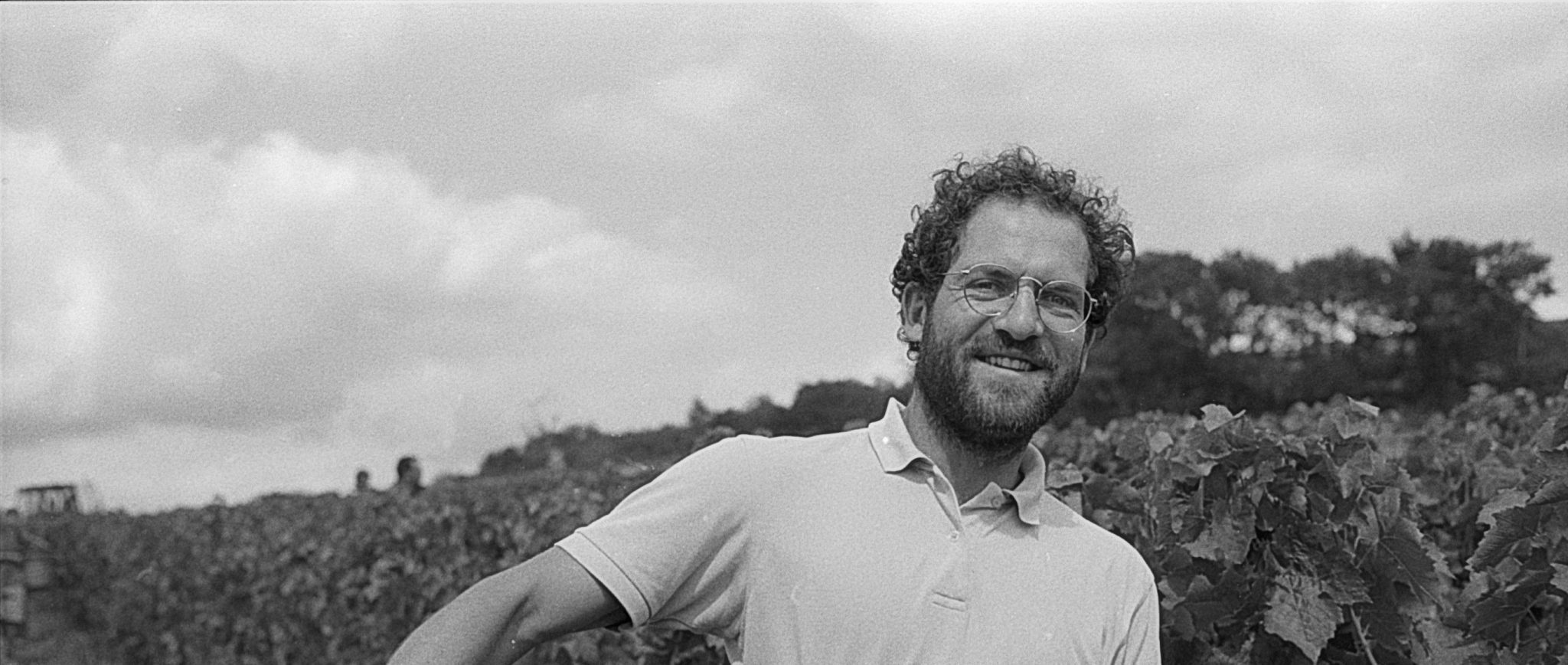
Domaine Chétif Quart uses mainly Gamay with Pinot Noir blended in a supporting role. The wine has a bright ruby hue showing youth and vibrance. Aromas of cranberry, red plum skin, red apple skin, and a mix of warm spices reminiscent of autumn. This is a fresh, energetic wine with a firm yet elegant tannic structure. Every aroma noted also shows on the palate and through the finish. I loved it with the beef stew I long ago adapted through faulty memory of how Julia Child showed us. I would also love it with any number of fall dishes including the all important Thanksgiving feast.
